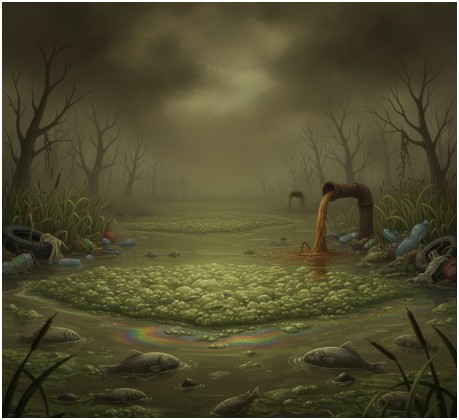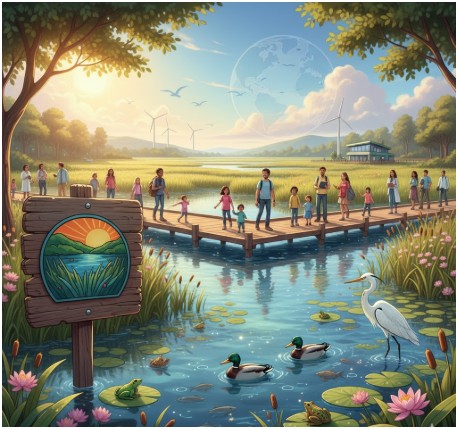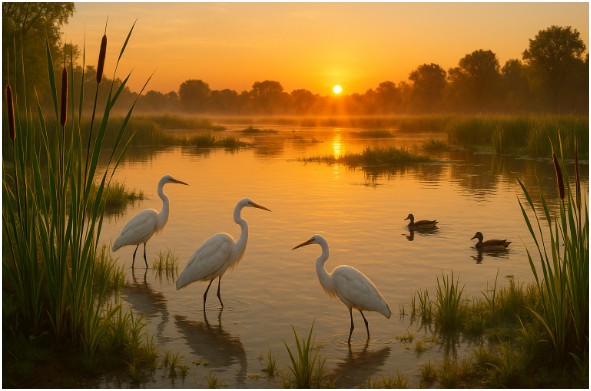Wetlands are some of Earth’s most productive yet threatened ecosystems, covering only 6% of the planet but supporting 40% of all species. These vital landscapes, like the Florida Everglades and prairie potholes, filter pollutants, store carbon, and bridge aquatic and terrestrial environments.
The Hidden Value of Wetland Ecosystems

Biodiversity Hotspots
Wetlands function as biological supermarkets, supporting an incredible concentration of species within relatively small areas. These ecosystems provide essential breeding grounds for waterfowl, with many species depending entirely on wetland habitats for reproduction and survival.
Fish populations also rely heavily on wetlands, as these areas serve as nurseries where young fish can develop in shallow, nutrient-rich waters protected from larger predators.
Amphibians find wetlands particularly crucial, using these environments for both aquatic and terrestrial life stages. Many salamander, frog, and toad species require specific wetland conditions for successful reproduction, making them excellent indicators of ecosystem health.
Natural Water Treatment Systems
Wetlands excel at water purification through natural processes that remove harmful substances before they reach groundwater supplies or downstream water bodies.
Wetland plants absorb excess nutrients like nitrogen and phosphorus—common pollutants from agricultural runoff and urban development—preventing these substances from causing harmful algal blooms in lakes and coastal waters.
The complex root systems of wetland vegetation trap sediments, reducing erosion and improving water clarity. Beneficial bacteria living in wetland soils break down toxic compounds, effectively detoxifying water through biological processes that would be expensive to replicate artificially.
Economic Benefits
The economic value of wetlands extends far beyond their natural beauty. These ecosystems provide flood control services worth billions of dollars annually by absorbing excess water during storms and releasing it slowly during dry periods. Coastal wetlands act as natural barriers against storm surge, protecting inland communities from hurricane damage.
Recreation and tourism centered around wetlands generate substantial economic activity. Birdwatching, fishing, hunting, and nature photography attract millions of visitors annually, supporting local businesses and creating jobs in rural communities.
Commercial fisheries also depend on healthy wetlands, as many commercially important fish species rely on these ecosystems during critical life stages.
Growing Threats to Wetland Survival

Development Pressures
Urban expansion and agricultural conversion represent the primary threats to wetland ecosystems worldwide. As human populations grow and cities expand, wetlands are often viewed as “wasteland” suitable for development rather than valuable ecosystems worthy of protection.
Shopping centers, housing developments, and industrial facilities frequently replace wetland areas, permanently destroying these irreplaceable habitats.
Agricultural expansion has historically been responsible for massive wetland losses. Farmers drain wetlands to create new cropland or pasture, often unaware of the ecosystem services these areas provide.
Government policies that once encouraged wetland conversion for agricultural purposes contributed significantly to historical losses, though modern policies increasingly recognize wetland values.
Pollution and Chemical Contamination
Agricultural runoff containing fertilizers, pesticides, and animal waste poses serious threats to wetland health. Excess nutrients from fertilizers can trigger algal blooms that deplete oxygen levels, creating dead zones where aquatic life cannot survive. Pesticides accumulate in wetland food chains, affecting everything from microscopic organisms to large predators.
Industrial pollution and urban stormwater introduce heavy metals, petroleum products, and other toxic substances into wetland environments. These contaminants can persist in wetland sediments for decades, creating long-term ecological problems that are difficult and expensive to remediate.
Climate Change Impacts
Changing precipitation patterns and rising temperatures affect wetland hydrology, potentially altering the seasonal water cycles that many species depend on.
Extended droughts can cause temporary wetlands to dry up completely, disrupting breeding cycles for amphibians and waterfowl. Conversely, increased flooding can overwhelm wetland capacity and wash away accumulated nutrients and organic matter.
Sea-level rise threatens coastal wetlands, potentially drowning these ecosystems faster than they can adapt or migrate inland. Salt water intrusion into freshwater wetlands changes plant communities and affects species that cannot tolerate increased salinity.
Conservation Strategies and Policies

Regulatory Protection
The Clean Water Act provides federal protection for many wetlands in the United States, requiring permits for activities that might damage or destroy wetland areas.
State and local governments often implement additional protections, creating layers of regulatory oversight designed to prevent unnecessary wetland losses.
Mitigation banking represents an innovative market-based approach to wetland conservation. Developers who must impact wetlands can purchase credits from mitigation banks—restored or preserved wetland areas that provide equivalent ecological value to what was lost. This system ensures no net loss of wetland functions while providing economic incentives for large-scale restoration projects.
Private Conservation Efforts
Conservation organizations work with private landowners to protect wetlands through voluntary programs and conservation easements.
The U.S. Fish and Wildlife Service’s Partners for Wildlife program provides technical and financial assistance to landowners interested in restoring wetlands on their property.
Duck Stamps, purchased by waterfowl hunters and conservationists, fund wetland acquisition and management through the National Wildlife Refuge System. This user-pay conservation model has protected millions of acres of wetland habitat while demonstrating how recreational users can contribute directly to conservation efforts.
International Cooperation
The Ramsar Convention provides an international framework for wetland conservation, with member countries committing to protect wetlands of international importance. This treaty facilitates cooperation on transboundary wetland conservation and promotes sustainable use practices worldwide.
Migratory bird flyway initiatives coordinate wetland conservation across international boundaries, recognizing that migratory species require habitat protection throughout their entire range.
These partnerships bring together governments, NGOs, and private stakeholders to address wetland conservation on a continental scale.
Restoration Techniques and Success Stories

Natural Restoration Approaches
Passive restoration involves removing human disturbances and allowing natural processes to restore wetland functions over time.
This approach works well when seed sources and appropriate hydrology remain intact. Simply plugging drainage tiles or removing fill material can sometimes restore wetland conditions with minimal intervention.
Active restoration requires more intensive management, including soil preparation, plant establishment, and ongoing maintenance.
Restoration practitioners carefully match plant species to specific hydrologic conditions, creating diverse plant communities that can support varied wildlife populations.
Engineering Solutions
Constructed treatment wetlands use engineered systems to replicate natural wetland functions for water treatment purposes. These systems effectively remove pollutants from municipal wastewater, agricultural runoff, and stormwater while creating habitat for wildlife.
Hydrologic restoration often requires engineering solutions to restore natural water flow patterns. This might involve removing levees, installing water control structures, or modifying drainage systems to mimic natural hydrologic cycles.
Monitoring and Adaptive Management
Successful restoration projects require long-term monitoring to track ecosystem development and identify potential problems.
An ecological consultant might assess plant establishment, wildlife use patterns, and water quality parameters to determine whether restoration goals are being met.
Adaptive management approaches allow restoration practitioners to modify techniques based on monitoring results and changing conditions. This flexible approach acknowledges that ecosystem restoration is an iterative process requiring ongoing adjustments and improvements.
Conclusion
Wetland conservation and restoration represent critical investments in our environmental and economic future. These remarkable ecosystems provide services worth trillions of dollars globally while supporting biodiversity that took millions of years to evolve.









